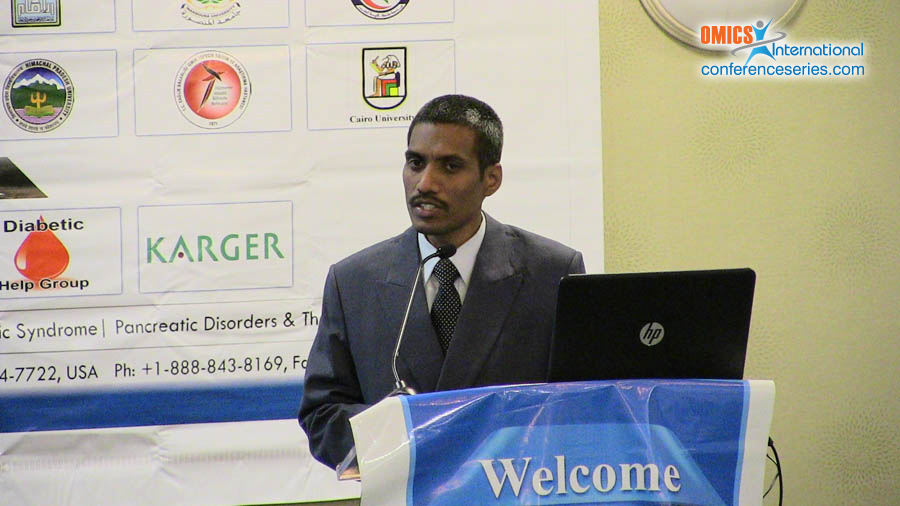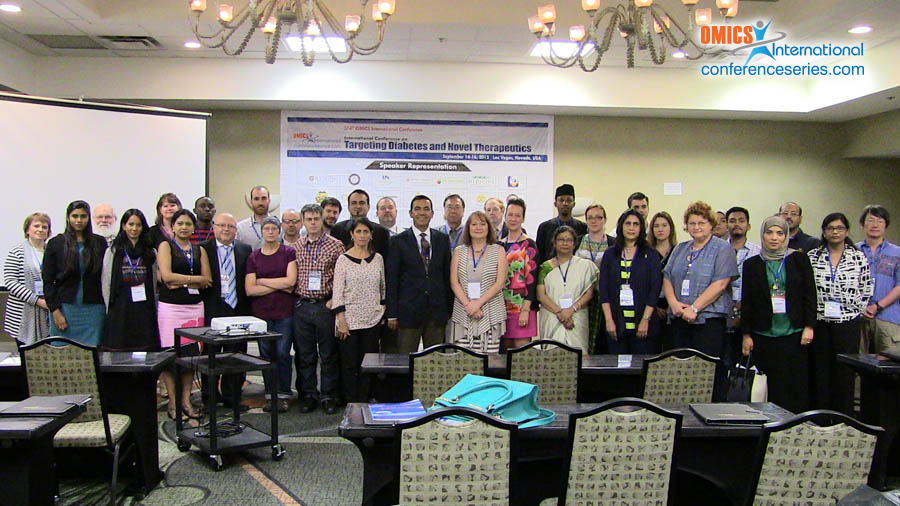
Gannu Praveen Kumar
Sahasra Institute of Pharmaceutical Sciences, India
Title: Current Status of Diabetes and a Need for Novel Formulations of Thiazolidinediones
Biography
Biography: Gannu Praveen Kumar
Abstract
Worldwide it is estimated that 220 million people suffer from diabetes mellitus and among all the diabetic patients, almost 90% suffer of type 2 diabetes. Twenty one million people in the United States, accounting for 7 % of the population, have diabetes mellitus (DM) according to the American Diabetes Association (ADA). One third of these people are not aware that they are diabetic as another 41 million people are preâ€diabetic. The total economic cost annually of diabetes is approximately 132 billion dollars. Diabetes is more frequent among African Americans, Hispanic Americans, American Indians and Asian/ Pacific Islanders. In people age 20 and older, 9.6% have diabetes and in patients of 60 years or older 20.9 % have diabetes. Diabetes is the sixth leading cause of death in the U.S, according to the center for disease control and prevention (CDC). The widespread occurrence of obesity supports the projection that cases of diabetes will continue to grow. Diabetes causes a significant economic burden both in terms of direct and indirect costs to society. It is also responsible for increased morbidity and mortality. Three metabolic defects are responsible for the progression to type 2 diabetes mellitus: peripheral insulin resistance, impaired -cell function, and increased hepatic glucose production. In modern age medicine1, treatments are available for diabetes mellitus like Sulfonylureas, GLP-1 agonists, DPP4 inhibitors, PPAR-γ agonists, GPR119 agonists and SGLT2 inhibitors. The thiazolidinediones are a new class of agents that have been developed to treat type 2 diabetic patients. They act as peroxisome proliferator-activated receptor gamma (PPAR-γ) agonists. Following their binding to the receptor, the heterodimer molecule that contains the binding site is activated thereby decrease insulin resistance. Pioglitazone hydrochloride acts as an agonist at peroxisome proliferator-activated receptors (PPARs) in target2 tissues for insulin action, such as adipose tissue, skeletal muscle, and liver. Activation of the PPAR-g regulates the transcription of insulin-responsive genes involved in the control of glucose production, transport, and utilization. In this manner, it enhances tissue sensitivity to insulin. Since there is a decrease in solubility with increase in pH and the half life being 3-5 hrs, so is incomplete absorption and eliminated quickly from the conventional tablets. Pioglitazone hydrochloride being a non-polar drug and cannot effectively break down the lattice structure of water and hence its aqueous solubility is low. Different techniques are used to enhance the aqueous solubility of drugs including salt formation, cocrystal formation, addition of cosolvents3, hydrotropes, surface active agents and SEDDS and ionic liquids. Pioglitazone hydrochloride is used in oral formulations, however the aqueous solubility is still low and reports of a number of investigations deal with solubilization. The objective of the present research work was to perform solubility studies in various oils and surfactants along with the cosolvents and to develop an optimum SEDDS for Pioglitazone HCl. SEDDS were characterized for size and zeta potential and in-vivo studies were performed to assess the bioavailability. Pioglitazone, a widely prescribed anti diabetic drug belongs to class IΙ under BCS and exhibit low and variable oral bioavailability due to its poor aqueous solubility. Its oral absorption is dissolution rate limited and it requires enhancement in the solubility and dissolution rate for increasing its oral bioavailability. The highest solubility was observed in labrafac, Tween 80 and propylene glycol. Then the feasibility of formulating pioglitazone SEDDS was evaluated and to analyse the effect of dilution on the dissolution rate and dissolution efficiency of pioglitazone. A comparative evaluation of pioglitazone from SEDDS was made in SGF and 1 % SLS. Pioglitazone dissolution was rapid from SEDDS and was higher when compared to pure drug. The rate and extent of release of pioglitazone Hcl from stable SEDDS (F1) was high in 1% SLS when compared to SGF. The FTIR spectra proved that there was on chemical interaction between excipients and drug. SEM studies confirmed that the size was small and spherical.



